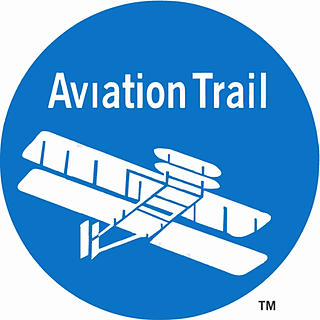Parachute Museum Anniversary
- Aviation Trail
- Dec 20, 2020
- 2 min read
In 2020 The Parachute Museum reached its tenth year of being open to the public as part of the Wright-Dunbar Interpretive Center, Third and Williams Streets in Dayton, Ohio. Ten years ago the Dave Gold family joined Aviation Trail, Inc. in a ribbon cutting ceremony. Prior to this special event, the Parachute Museum was open to the public in time for the 2003 First Flight Celebration. The museum at that time was incomplete, but with the Gold collection it was completed, but additions and changes continue.

The David Gold Parachute Collection, is considered one of the most comprehensive private parachute collections in the world. Upon Gold’s death in 1985 his estate donated his collection to Aviation Trail, Inc. The books, papers, reports, photographs and films were sent to nearby Wright State University Special Collections and Archives of the university’s Paul Laurence Dunbar Library.
The museum covers the parachute world development in Dayton. Visitors can experience ejecting from an F-16 fighter jet, parachuting from the world’s highest altitude, feel the physics of air that makes a parachute work, see and feel the resistance of air in free fall, go along with the first pilot to do an emergency free fall from his failing aircraft and many more along with interactive displays along which tell the storied history of the parachute invention from Leonardo Da Vinci to modern parachute assisted space craft landings on Mars.
Dayton McCook Field was the flight test center for the Air Service and did research and development of the parachute. Lt. Harold R. Harris was the first person to save himself by freefalling from a disabled airplane. He was also the first person inducted into the Caterpillar Club, for those aviators who save themselves from a disabled airplane by parachuting out of it. Visitors will watch a video demonstrating his historic jump. Caterpillar Club is named for the insects that spun the silk fiber used in parachutes at the time. Members now include Charles Lindbergh, General Jimmy Doolittle, President George H.W. Bush, Col. John Glenn and many other pilots.
The Parachute Museum has several interactive exhibits and videos of parachute science and development continued at Wright-Patterson Air Force Base. That is what McCook Field became in 1927, and continues research today.
Some of the parachute record jumps were part of research and development over the 20th and 21st centuries. In 1960 Captain Joseph Kittinger set the highest balloon ascent, highest parachute jump (102,800 feet), longest drogue fall and fastest speed by a human through the atmosphere (614 mph).
By 2012 Austrian Felix Baumgartner broke Kittinger’s record and jumped from 128,100 feet and became the first skydiver to exceed the speed of sound while in freefall (833.9 mph).
In 2014 Google Senior Vice President Alan Eustace broke the world altitude record for a parachute jump (25 miles above the earth). He also broke several other records. And the work of parachute study continues.
Visitors are invited to take a tour of the parachute collection and information on the second floor of Wright-Dunbar Interpretive Center.
See the Parachute Museum page http://www.aviationtrailinc.org/#!parachute-museum/c1wkn
for more information, and downloadable brochure.







Comments